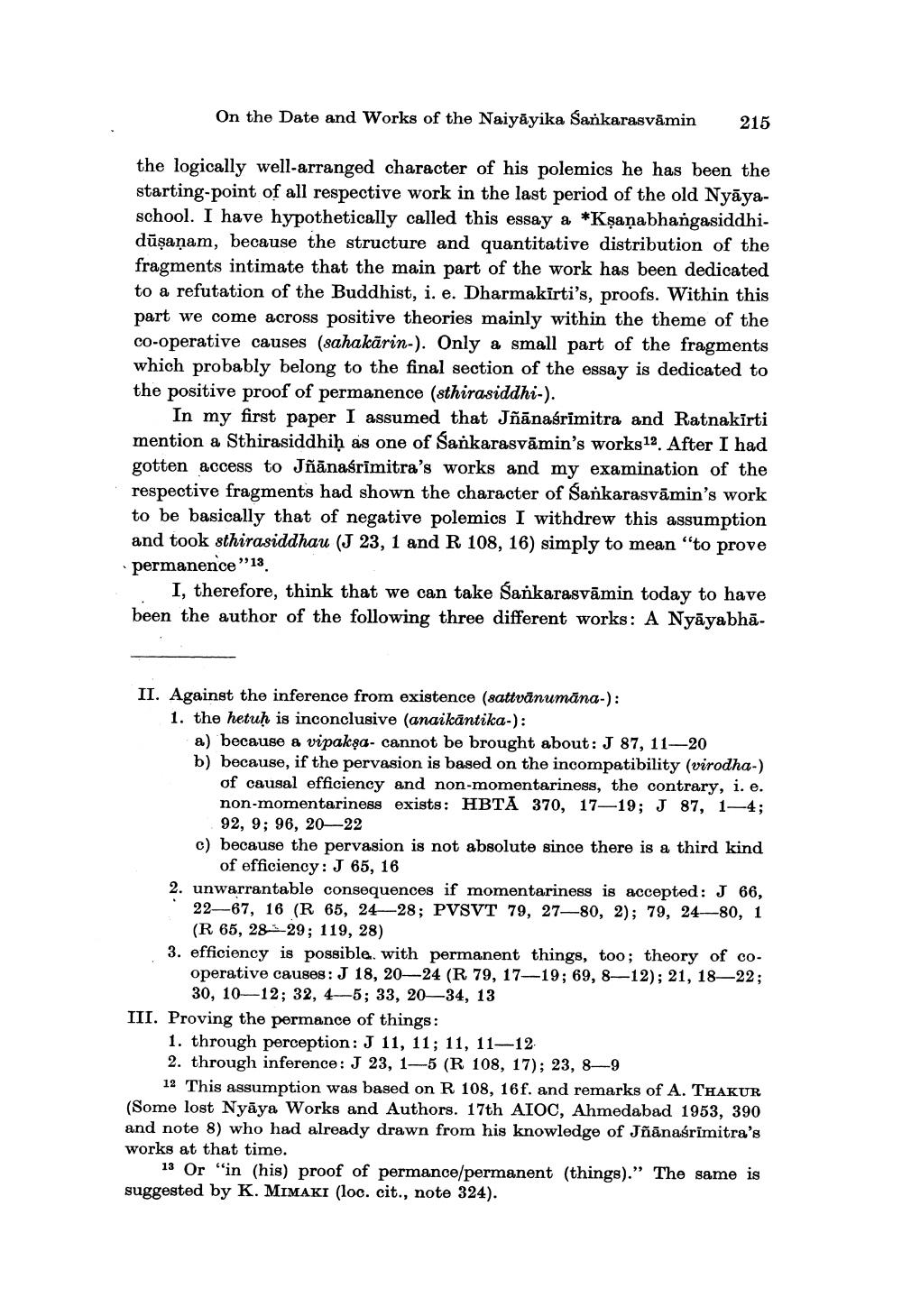Book Title: On Date And Works Of Naiyayika Sanskarasvamin Author(s): Ernst Steinkellner Publisher: Ernst Steinkellner View full book textPage 3
________________ On the Date and Works of the Naiyāyika Sankarasvāmin 215 the logically well-arranged character of his polemics he has been the starting-point of all respective work in the last period of the old Nyāyaschool. I have hypothetically called this essay a *Kṣaṇabhangasiddhidūşaņam, because the structure and quantitative distribution of the fragments intimate that the main part of the work has been dedicated to a refutation of the Buddhist, i. e. Dharmakīrti's, proofs. Within this part we come across positive theories mainly within the theme of the co-operative causes (sahakārin-). Only a small part of the fragments which probably belong to the final section of the essay is dedicated to the positive proof of permanence (sthirasiddhi-). In my first paper I assumed that Jñānasrimitra and Ratnakirti mention a Sthirasiddhiḥ as one of Sankarasvāmin's works12. After I had gotten access to Jñanaśrimitra's works and my examination of the respective fragments had shown the character of Sankarasvāmin's work to be basically that of negative polemics I withdrew this assumption and took sthirasiddhau (J 23, 1 and R 108, 16) simply to mean "to prove · permanence "13 I, therefore, think that we can take Sankarasvāmin today to have been the author of the following three different works: A Nyāyabhā II. Against the inference from existence (sattvānumāna-): 1. the hetuħ is inconclusive (anaikāntika-): a) because & vipakşa- cannot be brought about: J 87, 11-20 b) because, if the pervasion is based on the incompatibility (virodha-) of causal efficiency and non-momentariness, the contrary, i. e. non-momentarinens exists: HBTA 370, 17-19: J 87, 1-4: 92, 9; 96, 20-22 c) because the pervasion is not absolute since there is a third kind of efficiency: J 65, 16 2. unwarrantable consequences if momentariness is accepted: J 66, 22–67, 16 (R 65, 24-28; PVSVT 79, 27—80, 2); 79, 24–80, 1 (R 65, 28-29; 119, 28) 3. efficiency is possible with permanent things, too; theory of co operative causes: J 18, 20-24 (R 79, 17-19; 69, 8—12); 21, 18–22; 30, 10-12; 32, 4-5; 33, 20—34, 13 III. Proving the permance of things: 1. through perception: J 11, 11; 11, 11-12 2. through inference: J 23, 1–5 (R 108, 17); 23, 849 12 This assumption was based on R 108, 16f. and remarks of A. THAKUR (Some lost Nyāya Works and Authors. 17th AIOC, Ahmedabad 1953, 390 and note 8) who had already drawn from his knowledge of Jñānasrimitra's works at that time. 13 Or "in (his) proof of permance/permanent (things).” The same is suggested by K. MIMAKI (loc. cit., note 324).Page Navigation
1 2 3 4 5 6
